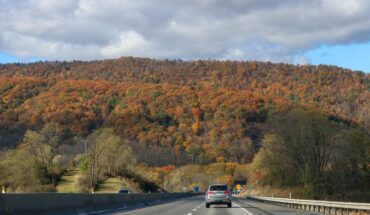One of the most exciting festivals in Asia is Holi Festival. Partake in a mass event where the streets end up covered in rainbow patterned splashes. Celebrants throw water balloons, liquids and powders made from brightly colored dye at each other and the entire scene resembles a rainbow battlefield! Holi Festival is colloquially known as The Festival of Colors, and sometimes, the Festival of Love. Stay clear of the water balloons and jets of spray that may ruin your camera if you are out there taking pictures! Spiritually, the festival represents ridding yourself of past errors and debts. It is a time to get together with family and friends and forgive past digressions.
The Holi festival is celebrated in India, Sri Lanka and Nepal in the last lunar cycle of winter. This is generally called Phalguna and occurs in February or March. People celebrate in the streets as well as at home with their friends and relations. The festivities start early, on the eve of the festival with a bonfire, singing and dancing. The bonfire is usually lit in the evening and is attended by everyone from the local area. The festival is celebrated by both Hindus and Sikhs annually. Being one of the most important Hindus festivals in the region, Holi attracts visitors from near and far to join the celebrations. Purnima Day or the Full Moon is celebrated on the eve of Holi marking the festivals commencement. At this time, old furniture and wooden sticks are set ablaze at the town centers. Locals offer vegetables, ears of corn, butter, coconuts and flowers to the god Hutashani, hoping to appease him. The next morning which is called Parva, people begin to shout out Bura no mano, Holi Hai. He motto for the festival translates as “Please forgive my strange behavior today as I am celebrating Holi”.
One of the accepted legends about Holi was found in a Sanskrit manuscript written in the 7th century. Krishna was given permission by his mother to paint his sister Radhu’s face with beautiful colors to make up for the fact that he did not have her fair complexion. The other reason for celebrating this festival is to bid goodbye to winter and usher in spring.
The main cities that celebrate this festival joyously are Delhi, Mathura, Rajasthan, Manipur, Mumbai and Goa. It is a good idea to take care if you plan to join in the celebrations. Festival goers will enjoy the unique inclusion of elephants in the parades. See tem dressed in traditional Indian decor. Several contests are held to select the best elephant that is beautifully adorned in Jaipur. Other attractions include polo and tug-of-war. There is also the opportunity to attend a Royal Ball: The royal family in Udaipur annually hosts a function at the City Palace, although tickets are usually quite scarce. The main fun at the festival comes from the water balloon fight, where the water balloons are filled with colorful dyes, be warned as some of the bright dyes used cause skin problems and even permanent discoloration. In earlier days, these dyes or “gulai” as they were called were made from sandalwood and springtime flowers. Today, synthetic dyes are being used.
The festival typically has lasts a duration of three days, however, it can go on for as many as 16. As it is unpredictable, it means you both have the opportunity to be disappointed that it has ended at the three day mark, but you may also get lucky and the festival will last for 2 weeks. Therefore, if your plans are relaxed, why not book a flexible ticket or keep your travel plans open.

